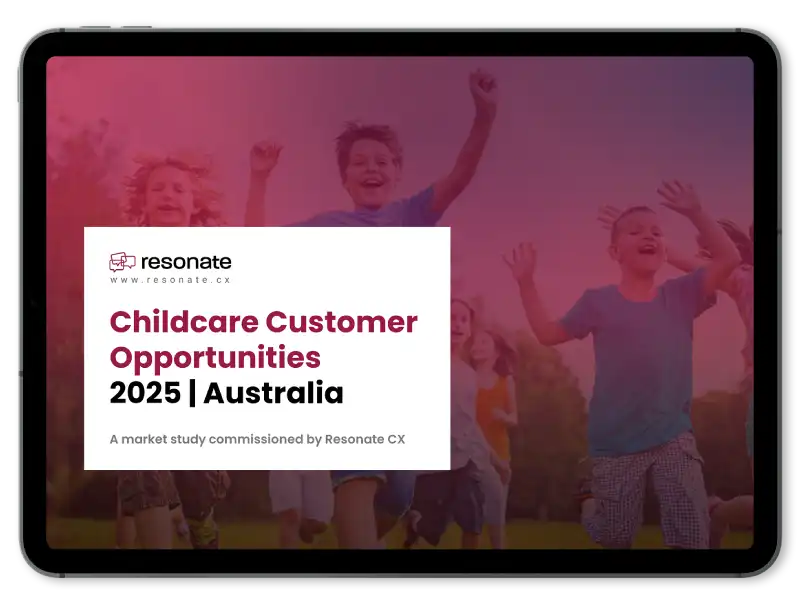TLDR:
- CX is a Core Resilience Strategy, Not an Extra Cost. Many organizations mistakenly cut Customer Experience (CX) budgets during a recession, viewing it as a non-essential extra to save money. This is a costly error, as consumers actually scrutinize every interaction more closely when money is tight, making a single negative experience devastating to loyalty.
- Retention is the Most Cost-Effective Path to Profit. Rather than treating CX as a cost, companies should see it as a reliable profit-driving lever in a downturn. Retaining loyal customers is significantly cheaper than acquiring new ones, with research showing that a small increase in retention can lead to substantial profit growth.
- Empowering Customers with Self-Service is Essential. Modern consumers prioritize control and autonomy, with a high percentage expecting companies to offer online self-service portals. Deploying effective self-service channels, like AI-powered chat and knowledge bases, reduces support costs while building loyalty by enabling customers to solve problems quickly on their own terms.
- Data-Driven Personalization Prevents Customer Churn. In times of economic anxiety, businesses must use customer data to provide personalized experiences that make individuals feel heard and valued. This deep personalization goes beyond basic communication and requires detailed win-loss analysis to understand and address the root causes of customer loss.
- Continued Innovation and a Long-Term View Secure Future Growth. History shows that companies that continue to innovate during a crisis significantly outperform competitors who halt their development efforts. Current CX investments are vital for building trust and loyalty that will last, positioning the business for sustained success and market leadership as the economy recovers.
Recessions don’t kill companies; it’s the bad customer experiences that do.
When the economy starts wobbling, most organisations reach for the same lever: slash budgets. On the surface, it feels justified. Cut anything that doesn’t deliver an immediate financial return. And, almost inevitably, customer experience (CX) gets tossed in with the so-called “extras.”
However, CX is not an extra. It’s the thread that keeps customers connected to your business when their loyalty is most fragile. When wallets tighten, people naturally become more deliberate about where they spend. Aside from being mindful about prices, consumers tend to gravitate toward brands that feel easy, trustworthy, and worth it. In this sense, rather than a luxury to sacrifice, CX serves as the engine of resilience.
In this blog, we’ll explain exactly why investing in CX during a recession is one of the smartest growth decisions you can make for your organisation.
The Misconception: Why Cutting CX Is a Costly Mistake
It’s easy to assume that customers will lower their standards when times are tough. In reality, the opposite happens. Customers scrutinise every experience more closely because they have less tolerance for wasted time or money.
That’s why even a single negative interaction can be devastating for brands in times of crisis. How big of an impact can it have? According to a report by Accenture, 87% of customers are likely to avoid a company after just one bad experience. Think about that: nearly nine out of ten people could walk away permanently because of one misstep.
Cutting your CX budget might save money this quarter, but it increases the odds of alienating customers who would have delivered long-term value. The short-term savings from reducing CX expenses vanish quickly when you factor in lost loyalty and reputational damage.
CX as a Profit-Driving Engine in a Downturn
The real power of CX comes into focus when you shift your perspective. Rather than treating CX as a cost to control, see it as a profit lever. Retaining loyal customers is consistently cheaper and more effective than chasing new ones. Based on a report by Harvard Business Review, acquiring a new customer can cost up to five times more than retaining an existing one. The math becomes even clearer when you look at the upside. Bain & Company found that boosting customer retention by just 5% can increase profits by 25% to 95%. In other words, small improvements in loyalty can translate into massive gains for your bottom line.
Imagine the impact on your own business. If you could increase profits by even a fraction of that range simply by keeping more customers happy, wouldn’t that be worth prioritising? In a recession, where growth is hard to come by, retention is the most reliable and cost-effective path forward.
The Three Pillars of a Recession-Proof CX Strategy
So how do you protect and strengthen customer relationships when the economy is working against you? Three pillars form the foundation of a resilient CX strategy.
1. Empowering Self-Service
Today’s customers want a greater degree of control when interacting with businesses. This includes when they’re seeking support. According to a survey published on Statista, 88% of buyers expect companies to offer an online self-service portal. Self-service channels like FAQs, knowledge bases, and AI-powered chat do more than reduce your support costs when they’re done well. These avenues empower customers to solve problems on their own terms, at any time, without waiting on hold or repeating themselves.
More than just cutting corners, deploying self-service channels is about recognising that speed and autonomy matter more than ever to modern consumers. A customer who can update their order status online at midnight or resolve a billing issue through an app is more likely to stay loyal than one forced into lengthy phone queues.
2. Data-Driven Personalisation
In uncertain times, every dollar customers spend is carefully weighed. What tips the scale is how a brand makes them feel heard and valued. How can your business communicate to customers that they matter? According to an article published on Forbes, 81% of customers prefer companies that provide personalised experiences. Living up to customer preferences entails understanding their history, anticipating their needs, and tailoring your offers accordingly.
Personalisation isn’t just inserting a name into an email. More than that, it’s recommending the right product at the right time
This is where win–loss analysis becomes useful. Every negative holds clues. By examining why deals were lost or why loyal customers decided to leave, you gain insights to improve future interactions. In a downturn, those lessons can be the difference between steady retention and a wave of churn.
3. The Value of Innovation
Recessions often tempt leaders to put innovation on hold. In times of uncertainty, it can seem like a smarter move to put experiments on hold for sunnier days. Yet history suggests this is a mistake. McKinsey’s analysis of the 2009 financial crisis showed that companies that continued innovating outperformed the market average by 30% or more and sustained stronger growth for years after.
Innovation doesn’t always mean radical change. Sometimes it’s rethinking small details that ease the customer journey. These can include simplifying a checkout flow, adding new payment options, or redesigning packaging for convenience. When customers are anxious about money and time, even modest improvements can feel transformative, and they remember the brands that made life easier.
The Future of Experience Management: Beyond the Downturn
It’s natural to focus on survival in a recession, but CX should also be viewed through a longer lens. Research by Luware shows that companies that maintain strong customer service in downturns reap the rewards in recovery. Customers don’t forget who stood by them when times were tough.
This means the investments you make now aren’t just about stabilising revenue today. They’re about building trust and loyalty that carry into tomorrow. As competitors cut back and deliver poorer experiences, you have the chance to stand out and capture lasting market share.
Conclusion: A Call to Action
The evidence is clear: far from a discretionary spend, CX is the foundation of resilience. Cutting it may ease pressure on the budget, but it undermines the very relationships that sustain revenue.
Instead, focus on what works:
- Strengthen self-service tools so customers feel in control.
- Use data to personalise every interaction and learn from losses.
- Keep investing in innovation so your brand stays relevant.
CX equals resilience + revenue + relevance. In a recession, it isn’t just about surviving. Rather, it’s about positioning your business for long-term growth. With solutions like Resonate CX’s customer experience management platform, you can centralise feedback, identify the moments that matter most, and act on them quickly, effectively turning customer insights into strategies that build loyalty even in tough times. So the question isn’t whether you can afford to invest in CX during a downturn. It’s whether you can afford not to.








